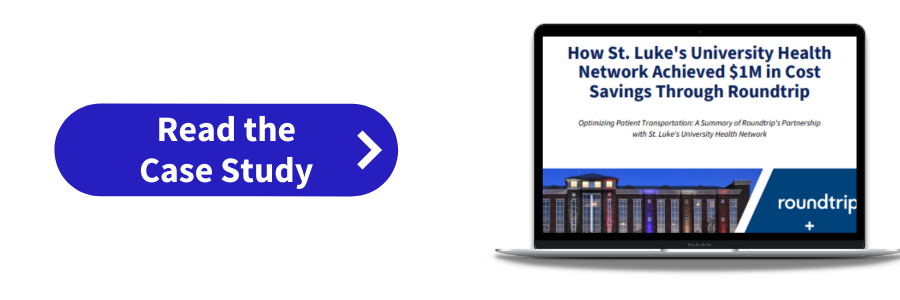The importance of job satisfaction among health system staff cannot be overstated.
When the well-being and contentment of healthcare professionals are overlooked, health systems face the risk of increased turnover, burnout, and a domino effect of consequences that ultimately impact patient satisfaction. Research shows that a range of factors impact staff satisfaction, including salary, benefits, advancement opportunities, and supervisors.
One area often overlooked when it comes to staff satisfaction: task efficiency. Overcomplicated processes and outdated technologies can dramatically affect how long it takes an employee to complete even the simplest of tasks.
Health systems must streamline processes and technologies to ensure their employees are able to operate efficiently to increase job satisfaction, thereby reducing turnover and increasing patient satisfaction scores.
The Benefits of Keeping Staff Happy
When staff is happy and engaged, it’s like a domino effect of positive outcomes for both patients and health systems.
Not only do satisfied healthcare professionals deliver top-notch care, but they also stick around, cutting down on turnover costs and ensuring a steady hand in patient care. Happy employees bring their A-game to work, making things run smoother and more efficiently. Plus, it’s a win-win when it comes to cost savings – less spending on recruiting and training, and healthier employees mean lower healthcare costs.
A positive work environment with less stress encourages team members to come up with fresh ideas and improvements, keeping us on the cutting edge of healthcare practices and technologies.
How a Lack of Efficiency Negatively Impacts Job Satisfaction
Let’s look at efficiency as it relates to booking patient transportation, specifically at St. Luke’s University Health Network (SLUHN). Booking patient transport was a major impediment for care coordinators and hospital staff. Manual, time-consuming methods such as phone calls and fax machines were extensively used, causing a considerable strain on the workflow.
This lack of efficiency is exemplified by the experiences of care managers who describe the process of manually contacting multiple transport companies to secure the fastest and most efficient transport. Additionally, Andrea Frechette, Operations Manager at SLUHN’s Communication Center, highlighted the overwhelming volume of phone calls, with the Communications Center managing 25,000 calls per month and over 5,000 transport requests within the hospital network.
Says Frechette, “”Many of these requests were made through manual phone calls to our community partners, sometimes requiring 10 to 15 outgoing calls just to secure one transport.” The inefficient nature of this system adversely impacts the overall job satisfaction of Communication Center employees.
How Improved Efficiency Improves Both Satisfaction…And the Bottom Line
Streamlining workflows and optimizing processes reduce stress and frustration for healthcare professionals, enabling them to concentrate more on patient care and less on administrative hassles.
A smoothly operating system not only boosts staff morale but also enhances overall job satisfaction. In fact, research shows that hospitals, on average, can increase outputs by 23 percent by reducing inefficiency.
As staff members witness the positive impact of streamlined operations, they are more likely to feel valued and motivated, creating a positive feedback loop that contributes to a healthier bottom line for the healthcare organization.
To see the tangible impact that efficiency has on staff satisfaction, let’s continue to look at the impact introducing patient transportation software had on St. Luke’s University Health Network (SLUHN).
A data-driven organization, SLUHN organized an initial staff satisfaction survey that was sent to communication center dispatchers in April 2022, two months before Roundtrip’s integration, followed by a subsequent survey in April 2023, nine months post-implementation.
The second survey revealed a 16-point improvement in dispatcher satisfaction around work/life balance.
This increase in satisfaction was attributed to there being less chaos during the workday, including an 86% reduction in call volume. The implementation of Roundtrip has effectively streamlined these processes, leading to smoother operations during shift changes, more timely departures, and a general reduction in work-related stress.
The survey also revealed a noteworthy finding: a 6-point increase in dispatchers’ willingness to endorse their department as a great place to work.
“Staff tell me all the time that they love Roundtrip. Wouldn’t you love [Roundtrip] if you used to have to spell out a patient’s name over the phone and now can ‘click click click’ and have your transport arranged?”
Rebecca Louden, Care Management Educator, St. Luke’s University Health Network
Conclusion
Prioritizing staff satisfaction through enhanced efficiency is not just a feel-good initiative; it’s a strategic move with far-reaching benefits for both healthcare professionals and the bottom line of healthcare organizations.
As demonstrated by the experiences at St. Luke’s University Health Network (SLUHN), the positive impact of streamlined operations goes beyond reducing stress and frustration. It directly translates into measurable improvements in job satisfaction, work/life balance, and even the endorsement of the workplace.
By investing in technologies that streamline processes, healthcare organizations not only create a positive work environment for their staff but also pave the way for long-term financial sustainability.

